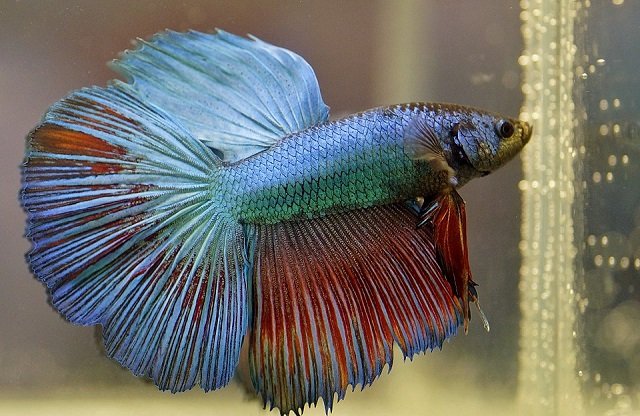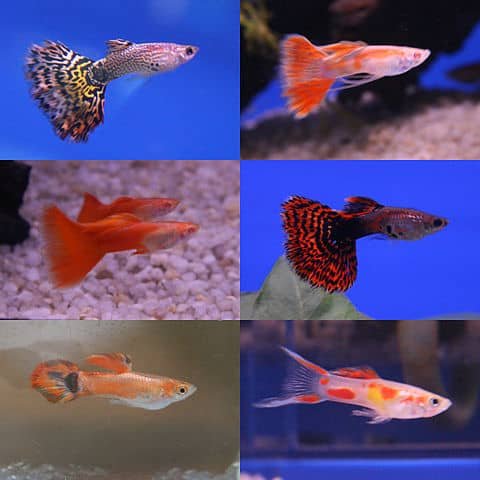
Fish farmers are constantly seeking ways to enhance desirable traits in their population, such as growth rate, disease resistance, and even fish-specific qualities.
Determining animal growth rate and body size is an intriguing scientific question, and understanding the molecular mechanisms involved can guide aquaculture production for genetic improvement. However, differences in genetic background between species have led to slow progress in related research.
In a study published in Reproduction and Breeding, a team of researchers from Hunan Normal University produced new germplasm resources through distant hybridization to explore the determination of growth rate and body size in fish.
Distant Hybridization
Hybridization, both natural and artificial, has played a crucial role in the evolution of various organisms and the improvement of agricultural practices. In the realm of fish farming, hybridization is especially effective due to external fertilization. In China alone, nearly half of all approved improved fish varieties in 2017 were hybrids, highlighting their widespread adoption.
Hybridization can be classified into two main types: close hybridization (within the same species) and distant hybridization (between different species).
Distant hybridization refers to crosses between two species, genera, or different higher taxa. Producing hybrid offspring is important for enriching germplasm resources. In the study, koi carp and Amur minnows were selected as parents for the hybridization experiment. These two parental species belong to different subfamilies within the Cyprinidae family and showed significant differences in growth rate, body size, reproductive cycle, and spawning behavior.
“Hybrid offspring can combine biological characteristics and the genome of both parents, allowing for the matching of phenotypes and genotypes,” explains co-author Yuqin Shu, a researcher at the State Key Laboratory of Developmental Biology of Freshwater Fish at Hunan Normal University.
Allopolyploids and allotriploids
The researchers conducted a hybridization experiment between female koi carp (KOC) (Cyprinus carpio haematopterus) and male Amur minnow (GR) (Gobiocypris rarus), which have the following characteristics:
Stay Always Informed
Join our communities to instantly receive the most important news, reports, and analysis from the aquaculture industry.
- Koi Carp (KOC): A popular ornamental variant of common carp, prized for its vibrant colors and long lifespan (up to 40 years) in captivity. KOC has significant economic value and can develop a strong bond with its owners.
- Rare Minnow (GR): A small freshwater fish native to China, known for its sensitivity to environmental changes, small size (2-8 cm), and ease of reproduction in laboratories. The short life cycle of GR (4 months) and high egg production (266 eggs per birth) make it a valuable tool for scientific research.
These two species belong to distinct subfamilies within the Cyprinidae family and exhibit significant differences in size, reproduction, and spawning behavior. Understanding the characteristics of their hybrids could open up interesting possibilities for aquaculture.
This unusual pairing resulted in the birth of two different types of hybrid offspring:
- Allopolyploid hybrids (CG): Possess two sets of chromosomes, one from each parent.
- Allotriploid hybrids (CCG): Contain three sets of chromosomes, two of which likely originate from the female KOC.
In-Depth Analysis: Comparison of hybrids and parents
The team conducted a detailed analysis of the hybrids (CG and CCG) compared to their parents (KOC and GR). This analysis focused on several key aspects:
- Physical characteristics: Both CG and CCG hybrids showed a closer resemblance to the Amur minnow (GR) in most measurable and countable traits, with some exceptions such as body proportions.
- Cellular characteristics: Interestingly, only CCG hybrids showed a unique dumbbell-shaped nucleus in their red blood cells, a trait not observed in parents or CG hybrids.
- Genetic composition: DNA analysis confirmed the hybrid status of CG and CCG. Both shared homeobox (Hox) genes and 5S ribosomal RNA from both parents. Mitochondrial genes, however, showed a stronger maternal (KOC) influence with some traces of paternal (GR) inheritance.
Faster Growth in Allotriploid Hybrids
The study revealed a fascinating finding: CCG hybrids exhibited a significantly faster growth rate compared to CG hybrids. This could be attributed to the positive regulation of a growth-promoting gene (growth hormone 1 – gh1) and negative regulation of a growth-inhibiting gene (myostatin b – mstn) in CCG hybrids.
“We also found that triploid hybrids showed a faster growth rate and larger body size than diploid hybrids under the same conditions,” adds Shu. “The two types of hybrid offspring show similar genetic backgrounds but different growth rates, making them ideal subjects for growth trait research.”
Scientists analyzed the expression of growth-related genes to investigate the reason for the difference in growth rate between diploid and triploid hybrids. The researchers discovered that growth-promoting genes, such as gh1 and igf1, were highly expressed in triploid hybrids, while the opposite was true for suppressor genes. These results partly explain the faster growth of triploid hybrids.
Conclusion
This research successfully produced two unique fish hybrids with distinct growth characteristics while sharing a similar genetic background. These hybrids present a valuable resource for future studies on fish growth regulation.
The findings pave the way for exciting advancements in fish breeding through distant hybridization. This technique has immense potential for creating new fish breeds with higher growth rates, disease resistance, and other desirable traits, ultimately leading to a more sustainable and productive aquaculture industry.
“An essential aspect of our future research will involve an in-depth analysis of the underlying mechanism governing gene expression patterns in diploid and triploid hybrids,” says Shu.
The study was funded by the National Natural Science Foundation of China and the Natural Science Foundation of Hunan Province.
Contact
Yuqin Shu
State Key Laboratory of Developmental Biology of Freshwater Fish, College of Life Sciences, Hunan Normal University, #36 Lushan South Road, Changsha, 410081, China.
Email: shuyuqin@hunnu.edu.cn
Reference (open access)
Wang, M., Ou, Y., Guo, Z., Li, J., Li, H., Li, X., … & Liu, S. (2024). Characterization of allodiploid and allotriploid fish derived from hybridization between Cyprinus carpio haematopterus (♀) and Gobiocypris rarus (♂). Reproduction and Breeding, 4(1), 46-54.
Editor at the digital magazine AquaHoy. He holds a degree in Aquaculture Biology from the National University of Santa (UNS) and a Master’s degree in Science and Innovation Management from the Polytechnic University of Valencia, with postgraduate diplomas in Business Innovation and Innovation Management. He possesses extensive experience in the aquaculture and fisheries sector, having led the Fisheries Innovation Unit of the National Program for Innovation in Fisheries and Aquaculture (PNIPA). He has served as a senior consultant in technology watch, an innovation project formulator and advisor, and a lecturer at UNS. He is a member of the Peruvian College of Biologists and was recognized by the World Aquaculture Society (WAS) in 2016 for his contribution to aquaculture.




